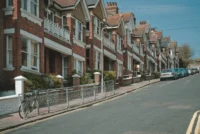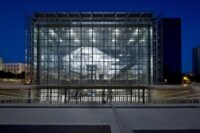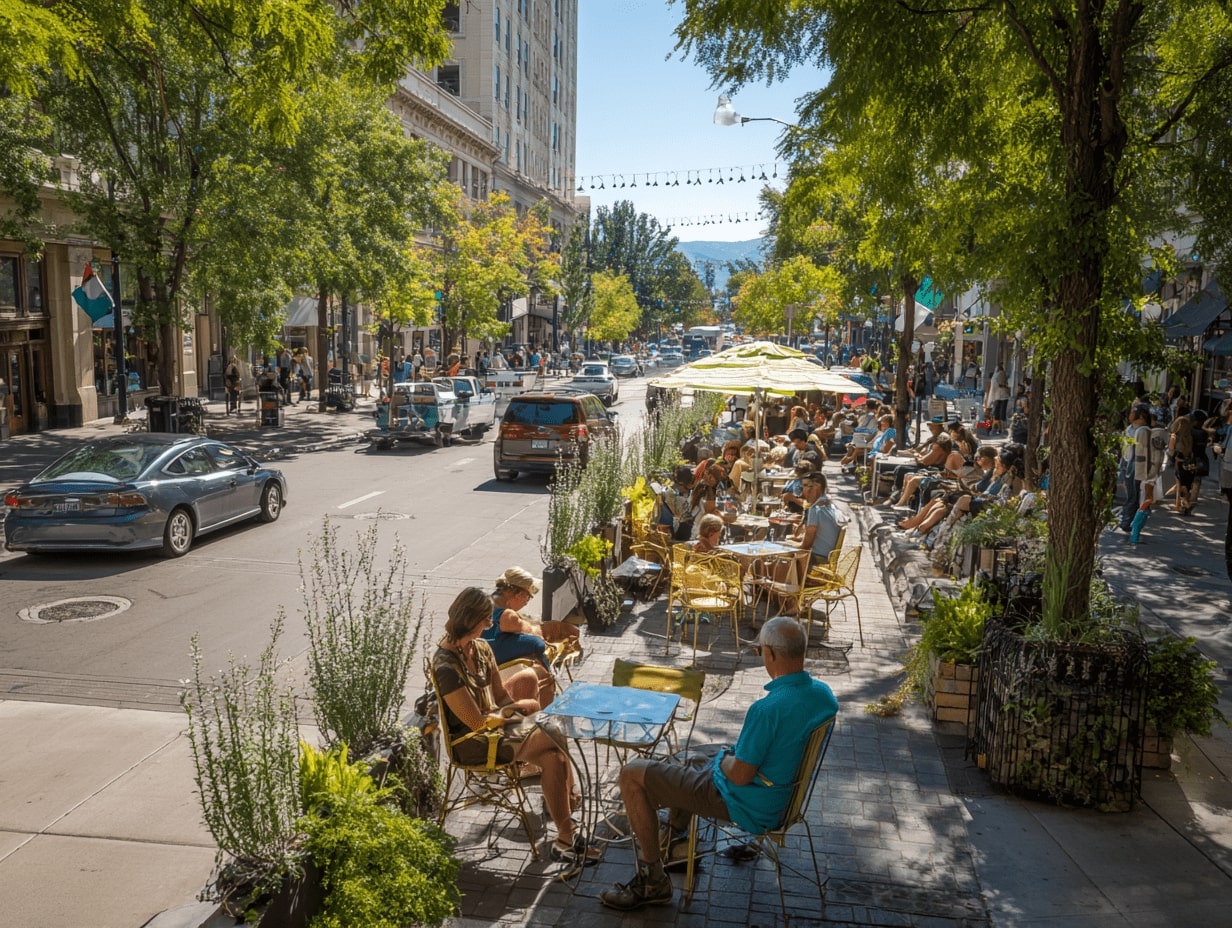- Home
- Articles
- Architectural Portfolio
- Architectral Presentation
- Inspirational Stories
- Architecture News
- Visualization
- BIM Industry
- Facade Design
- Parametric Design
- Career
- Landscape Architecture
- Construction
- Artificial Intelligence
- Sketching
- Design Softwares
- Diagrams
- Writing
- Architectural Tips
- Sustainability
- Courses
- Concept
- Technology
- History & Heritage
- Future of Architecture
- Guides & How-To
- Art & Culture
- Projects
- Interior Design
- Competitions
- Jobs
- Store
- Tools
- More
- Home
- Articles
- Architectural Portfolio
- Architectral Presentation
- Inspirational Stories
- Architecture News
- Visualization
- BIM Industry
- Facade Design
- Parametric Design
- Career
- Landscape Architecture
- Construction
- Artificial Intelligence
- Sketching
- Design Softwares
- Diagrams
- Writing
- Architectural Tips
- Sustainability
- Courses
- Concept
- Technology
- History & Heritage
- Future of Architecture
- Guides & How-To
- Art & Culture
- Projects
- Interior Design
- Competitions
- Jobs
- Store
- Tools
- More
How Urban Design Evolves Like Nature
How urban design evolves like nature: a practical guide to adaptive cities ecology-inspired patterns, fast feedback, resilient streets, and measurable equity.

Cities don’t stand still. They grow, shed, and adapt, much like forests after a fire or rivers after a flood. When we ask how urban design evolves like nature, we’re really asking how we can design places that learn. That means shifting from rigid blueprints to responsive systems, so our streets, buildings, and policies can move with the pressures of climate, culture, and economics. Let’s explore what it takes to design cities that behave like living ecosystems.
Table of Contents
ToggleFrom Static Plans To Living Systems
Cities As Evolving Organisms
If we treat cities as organisms, planning stops being a one-off act and becomes continuous care. We iterate, prune, and seed. Zoning maps give way to adaptable frameworks, and building codes become performance-based, not purely prescriptive. Think of a street that shifts curb space seasonally, parklets in summer, stormwater storage in winter. When we design for evolution, we create conditions, not fixed forms, under which desirable patterns can emerge and persist.

Selection Pressures: Economics, Climate, Culture
Urban form is shaped by “selection pressures.” Rising heat pushes shade-first design and cool materials. Housing costs select for gentle density, accessory units, and mixed-use infill. Cultural shifts, remote work, night economies, aging in place, reshuffle demand for space and mobility. We thrive when we anticipate these pressures with adaptable parcels, modular buildings, and streets that can flex between bikes, buses, and delivery needs.
Patterns And Processes Borrowed From Ecology
Succession And Incrementalism
Ecological succession reminds us that big outcomes often start with small moves. We can pilot a pop-up bus lane, then harden it if ridership jumps. Vacant lots can host community gardens, later evolving into co-ops or affordable housing as needs and capacity grow. We plan the next right step, not the final picture, because cities, like forests, mature through stages.

Edges, Corridors, And Patches
Healthy ecosystems have edges that mix habitats, corridors that move life, and patches that anchor it. In cities, edges are active ground floors and shaded sidewalks. Corridors are reliable transit spines and safe bike networks. Patches are plazas, pocket parks, libraries, and schools, places that concentrate activity. We design the mosaic: connected greenways, fine-grained blocks, and small frontages that invite micro-enterprises.
Diversity And Redundancy
Monocultures fail hard. We hedge risk with land-use diversity and redundancy in mobility and energy. If one transit line goes down, people can still bike, walk, or hop a shuttle. Mixed incomes and housing types stabilize neighborhoods through cycles. Redundant green infrastructure, bioswales plus tree canopies plus permeable paving, keeps streets dry when storms stack up.
Feedback Loops And Self-Organization
Bottom-Up Emergence
Great urban places often start from the bottom up: a café cluster turns a quiet corner into a destination: a weekend market seeds a permanent main street. Our role is to remove friction, simplify permits, legalize small formats, allow adaptive reuse, so residents and entrepreneurs can iterate. When we see positive feedback (more foot traffic, safer nights), we amplify it with lighting, seating, and transit.

Data As Urban Senses
Nature senses through smell, sight, and touch: cities sense through data. Air-quality monitors, bus GPS, curb sensors, and community reporting give us a live read. But data only helps if we close the loop. If heat islands spike, we cool corridors with trees, shade sails, and reflective surfaces. If intersections show near-misses, we re-time signals, tighten corners, and add daylighting. Short learning cycles beat perfect predictions.
Form Follows Flow

Street Networks As Rivers
Water carves channels: people carve desire lines. When we map actual flows, feet, bikes, buses, freight, we can adjust the channel. Narrow where speeds are unsafe, widen where crowds burst at the seams, add protected lanes where latent demand is obvious. Like river restoration, we calm the main channel, reconnect side channels (alleys, passages), and keep the floodplain, flex zones for events and emergencies.
Urban Metabolism And Circular Material Cycles
Cities metabolize energy, water, and materials. Linear systems, take, make, waste, are brittle. Circular loops, harvest rain, reuse graywater, compost organics, reclaim building materials, build resilience and cut costs. We can design deconstruction-ready buildings, district energy that captures waste heat, and local repair hubs. The payoff is lower emissions and neighborhoods that can ride out supply shocks.
Resilience And Adaptation In Practice
Designing For Disturbance
Forests adapt by expecting fire: cities should expect disruption. We plan shade shelters and cooling centers before heat waves, elevated critical infrastructure before floods, and microgrids that island during outages. Streets can flip to emergency corridors: plazas can store stormwater under permeable surfaces. We train, drill, and communicate so residents know where to go when it counts.

Retrofitting And Rewilding
Most of the 2050 city is already built, so retrofits matter. We can peel back asphalt for bioswales, convert dead malls into mixed-use neighborhoods, and turn underused parking into housing with layered mobility options. Rewilding, native plantings, pollinator corridors, daylighted creeks, cools microclimates and boosts biodiversity while giving people everyday nature, not just weekend nature.
Metrics For A Healthy Urban Ecosystem
Connectivity And Accessibility
We measure the network, not just nodes: how many jobs, schools, parks, and groceries can people reach in 15 minutes without a car? Intersection density, average block length, and transit headways tell us if the mesh is fine enough. Accessibility is the outcome that matters.
Biodiversity And Microclimate
Urban life thrives when other life does too. We track canopy cover, native species counts, soil permeability, and surface temperatures. Targeting shade where heat and vulnerability overlap saves lives. Green roofs, street trees, and pocket wetlands stitch together an urban habitat that also manages stormwater.

Social Vitality And Equity
A healthy city feels alive and fair. We watch small-business turnover, evening foot traffic, permit times for small projects, and distribution of public investment. Disaggregate by race, age, and income so we see who benefits. If our metrics don’t move for those most affected by climate and cost pressures, we change course.
Conclusion
Designing with nature isn’t romantic, it’s pragmatic. When we ask how urban design evolves like nature, we commit to patterns that learn: small bets, fast feedback, flows before forms, and diversity that cushions shocks. Our job is to cultivate conditions where good things compound, safer streets, cooler blocks, affordable homes, thriving ecosystems. If we design for evolution, our cities won’t just endure change, they’ll get better because of it.
- adaptive urban environments
- biodiversity in urban design
- biomimicry in urban design
- biophilic urban planning
- cities inspired by nature
- ecological urbanism concepts
- environmentally friendly urban solutions
- future of urban design
- green infrastructure in cities
- human-centered urban planning
- integrating nature in urban areas
- landscape urbanism
- nature-based solutions urban areas
- nature-influenced city planning
- nature-inspired urban planning
- organic architecture and design
- sustainable urban development
- urban design evolution
- urban ecosystem services
- urban resilience strategies
Submit your architectural projects
Follow these steps for submission your project. Submission FormLatest Posts
How DeepSeek AI Is Transforming Architecture and Urban Design Workflows
DeepSeek AI represents a new generation of architectural intelligence, shifting artificial intelligence...
Copenhagen Named the Happiest City in the World in 2025
Copenhagen has been named the happiest city in the world in 2025...
Frank Gehry’s Transformative Ideas in Urban Design
Frank Gehry’s influence extends far beyond expressive architecture; his ideas have reshaped...
Architecture as Infrastructure: Designing Beyond Buildings
Architecture as infrastructure reframes cities as systems—flows, lifecycles, and value. Explore resilient...












Leave a comment